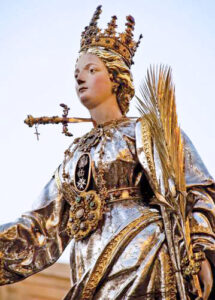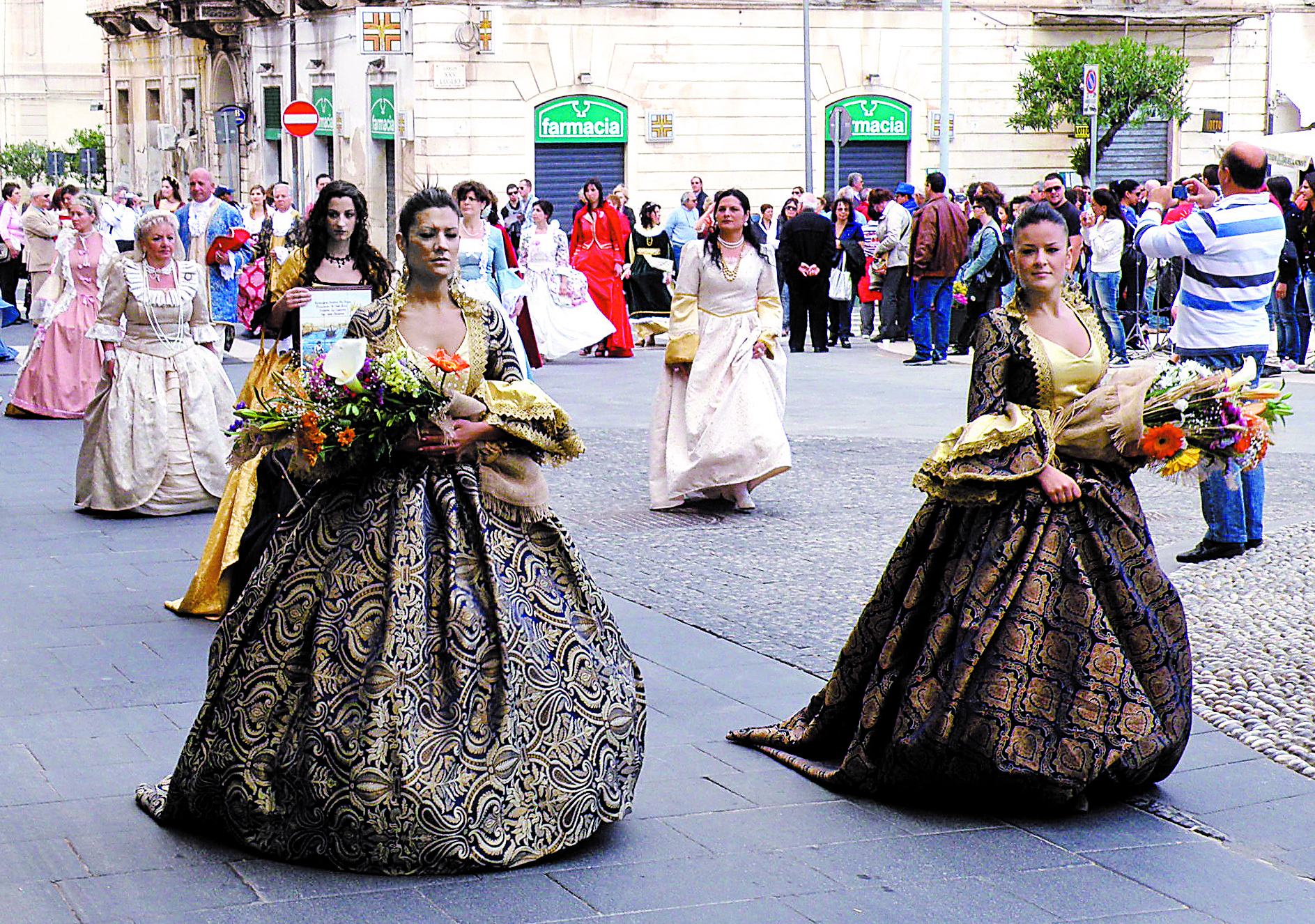Santa Lucia, il giorno piu’ corto che ci sia, is a saying known to every Italian child. It means “Santa Lucia, the shortest day of the year.” While Saint Lucy’s feast day does not exactly coincide to the winter solstice on December 21, the celebration on December 13 of this beloved saint marks the one of the important days of the early Christmas season in Italy.
Saint Lucy was born during the third century in Sicily to a life of privilege and wealth, but her interests were not in worldly goods. She was a devout Christian at a time when the faithful were heavily persecuted and she vowed to live as a virgin in devotion to Christ. Her mother, however, arranged a marriage for her to a pagan suitor. To dissuade her mother by proof of a miracle, Lucy prayed at the tomb of St. Agatha that her mother would be cured of a long term illness. When the miracle happened, her mother agreed to call off the plans for the marriage.
Lucy’s suitor had other plans and revealed her as a Christian. Authorities went to arrest Lucy and planned to force her into slavery, but were unable to move her, even after tying her to a team of oxen. They planned to torture her by fire, but the fire consistently died out. Instead, the brutal men tore her eyes out and killed the innocent girl. St. Lucy thus became the patron of the blind and is often depicted carrying her eyes. Her name, Lucia means light and light plays a role in the customs of her feast day.


The Feast of Saint Lucy is celebrated differently throughout the regions of Italy. In the northern regions of Lombardy and Veneto, Saint Lucy’s Day is celebrated with outdoor markets, offering candies and handmade products to buy as gifts. Many stands display traditional trays covered with candies, wrapped and ready to be purchased and given to friends and family. While the feast is a day of merriment and exchanging gifts and sweets in northern regions of Italy, in the southern regions of Calabria and Sicily, the day is marked more with veneration and less with celebration.
In southern Italy, the Feast of Santa Lucia is a religious event, without gifts, markets or sweets. The most important celebration takes place in Siracusa, Sicily, where Lucia was born and martyred. The evening of December 12th, during a religious ceremony in the Cathedral, the silver statue of Lucia, patron saint of the city, is moved from its chapel to the high altar. The next day, the statue is carried by a procession of 60 men wearing traditional green hats through the entire city.
The procession goes on for several hours, taking the form of a solemn pilgrimage during which the saint’s devotees shout “Siracusana je!” (She is a Syracusan!). Holding lighted candles in their hands, many people walk barefoot to enhance their thanks and pleas to the Saint. The statue of Santa Lucia, along with twelve cilii, huge wooden candelabra decked with flowers, is followed by the carriage of the officials dressed in traditional costume. As the statue reaches the Piazza Santa Lucia, ringing bells announce its entrance into the church.
During the Feast of Santa Lucia, a traditional food is prepared and eaten, not only in Siracusa, but in all of Sicily called cuccìa. It is a sweet dish made of boiled wheat prepared in different ways in the various parts of the region.
The origin of this dish is the city of Palermo. According to legend, the region was suffering a terrible famine centuries ago and people had nothing to eat. On December 13, a mysterious ship full of wheat, believed to be sent by Santa Lucia, arrived in Palermo’s harbor. People immediately started to boil and eat it, as they were too hungry to wait for it to be milled and made into bread. Today, cuccia is eaten throughout the region to thank and celebrate Santa Lucia.





